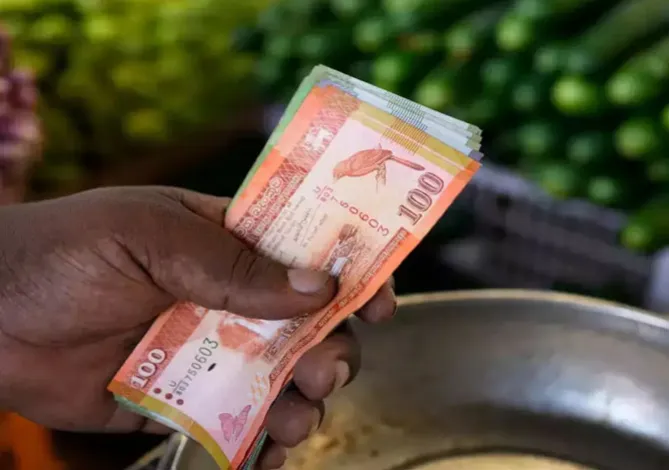
The recently passed 2024 Budget has many promises but when judging Sri Lanka by its past, it falls short of the revenue needed to fulfill expenditures for key proposals in the budget. The budget posed a significant dilemma for Sri Lankan President Ranil Wickremesinghe. He had to balance the needs of the International Monetary Fund (IMF) programme but at the same time, ward off pressure from his coalition to produce a populist budget as 2024 is an election year. Sri Lanka is currently in its 17th IMF programme and has been under various such programmes since 1965, of which it has completed only nine programmes.
Positives from the budget
Sri Lanka’s Budget 2024 has interesting proposals that can drive the country forward. Tenets living on public housing schemes are to be given ownership of the land and estate workers are to be given land. This is an important step since 82 percent of land in Sri Lanka is owned by the government, so this will enable the people receiving land ownership to use the land as collateral to finance any initiative.
The Central Bank Act has been passed, and its key features include removing the Treasury Secretary from the Monetary Board, disallowing the Central Bank from purchasing directly from the primary market, and having price stability as its core objective.
The small and medium enterprises sector which contributes to 52 percent of Sri Lanka’s GDP has been given concessionary loans. This can help most of these enterprises survive as many of them are on the verge of collapse. INR 450 billion has been allocated to the capital improvement of the banking sector, and 20 percent of the shares of the two largest public banks are to be privatised. As state banks have played a key role in lending to the government which has allowed for large fiscal deficits, the privatisation of state banks will bring in accountability and transparency. The Central Bank Act has been passed, and its key features include removing the Treasury Secretary from the Monetary Board, disallowing the Central Bank from purchasing directly from the primary market, and having price stability as its core objective. This will result in greater fiscal discipline as the government cannot rely on monetary finance. Sri Lanka also being shut out of international capital markets meant the only option was to borrow from state banks which is the reason they need recapitalisation. Partial privatisation will result in greater fiscal discipline.
The government has also made budget proposals with regard to international trade. Sri Lanka remains one of the most protected economies in the world with a higher share of the non-tradable sector. Non-tariff import taxes are to be phased out. This can result in a decrease in revenue but will help manufacturing as 80 percent of imports are intermediate and capital goods needed for production. A single window for border management agencies is to be established. Modernisation of customs laws and new free trade agreements are positive developments. A larger focus has also been placed on capital expenditure at a staggering INR 375 billion on roads and urban development which will try to address the infrastructural shortfalls in Sri Lanka. Though this will cause a strain on the fiscal balance, the government sees it as needed to attract investment with the correct infrastructure in place.
A larger focus has also been placed on capital expenditure at a staggering INR 375 billion on roads and urban development which will try to address the infrastructural shortfalls in Sri Lanka.
The government has also proposed establishing new state and foreign universities and looking at the option of interest-free student loans to promote human capital. This means many students can pursue education outside the state university system.
Budget challenges
This budget comes with its challenges too. It has been drafted from a very difficult position for the government. The number of poor living in Sri Lanka has increased from 3 million in 2019 to 7 million. The economy had contracted by 7.8 percent in 2022 and 7.9 percent in the first half of 2023. Though inflation has come under control, last year’s high inflation of 70 percent has already reduced the purchasing power of the Sri Lankan consumer.
In this economic climate, the IMF programme is largely focusing on a revenue-based fiscal consolidation, as Sri Lanka has one of the lowest government revenue-to-GDP ratios in the world. As nearly 60 percent of the tax revenue comes from goods and services taxes, it will be challenging to raise the needed revenue as the economy is contracting. The government is expecting a year-on-year tax increase of 47 percent with the budget but the only major tax change from last year is the increase in Value Added Tax rate from 15 percent to 18 percent. This will be a challenge as Sri Lanka has not met its revenue targets since 2000.
For the last 23 years, Sri Lanka has failed to meet the revenue targets set out in its budget. The Sri Lankan government aims to raise revenue by 45 percent with the 2024 budget but for the first 9 months of 2023, revenue fell short by 29 percent. This inability to meet its revenue targets is also a key reason for the delay in the release of the second tranche from the IMF to Sri Lanka.
The IMF programme is largely focusing on a revenue-based fiscal consolidation, as Sri Lanka has one of the lowest government revenue-to-GDP ratios in the world.
The government will have to increase the VAT base or decrease the VAT thresholds to increase further revenue. For a country of 22 million people, less than 300,000 people have personal income tax files and from that, less than 60,000 have paid income taxes as of 2022. The budget has mentioned plans to increase the personal income tax base as well. A personal income tax number is required to open a bank current account or renew a vehicle annual license. The government hopes to increase the tax base through such measures.
But the biggest challenge is implementation and accountability. Greater fiscal transparency was also termed as necessary by the IMF. According to Verite Research, the progress is unknown for proposals that used 97 percent of the funds. The lack of implementation is a greater concern —certain proposals have been in many budgets in the past and have never been implemented. So this raises the question of how likely these proposals are to be implemented.
The road ahead
Sri Lanka has a long road ahead for economic recovery. Currently, public debt is at 128 percent of GDP and according to the IMF targets, it is to be brought down to 95 percent by 2032. The challenge remains revenue collection and Sri Lanka has a formidable task ahead on this front. Fiscal transparency, accountability, and implementation are key. The focus on improving international trade, privatisation, and increased capital expenditure is positive news for the long-term economic growth of Sri Lanka. A lot depends on the upcoming elections and the politics building up to it which will decide Sri Lanka’s path ahead as the nation stands at a crossroads.
Talal Rafi is an Economist and an Expert Member of the World Economic Forum.
The views expressed above belong to the author(s). ORF research and analyses now available on Telegram! Click here to access our curated content — blogs, longforms and interviews.




 PREV
PREV


